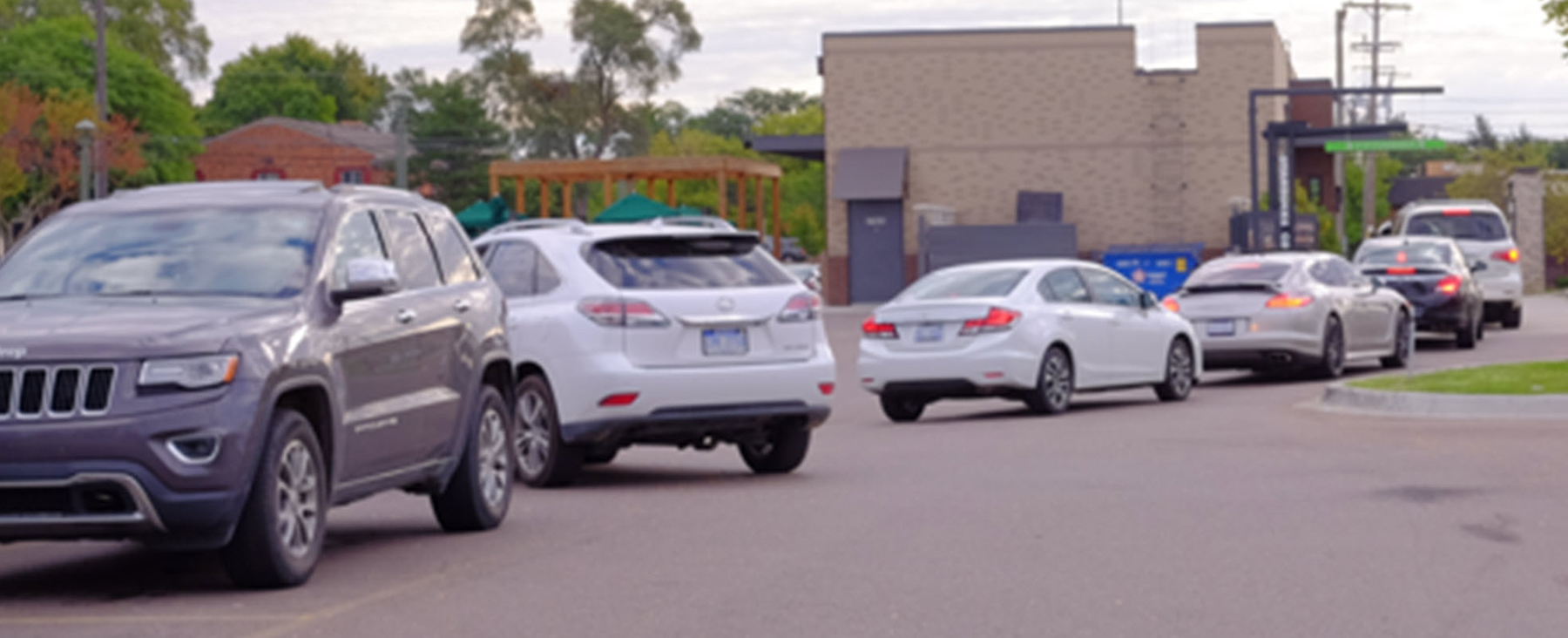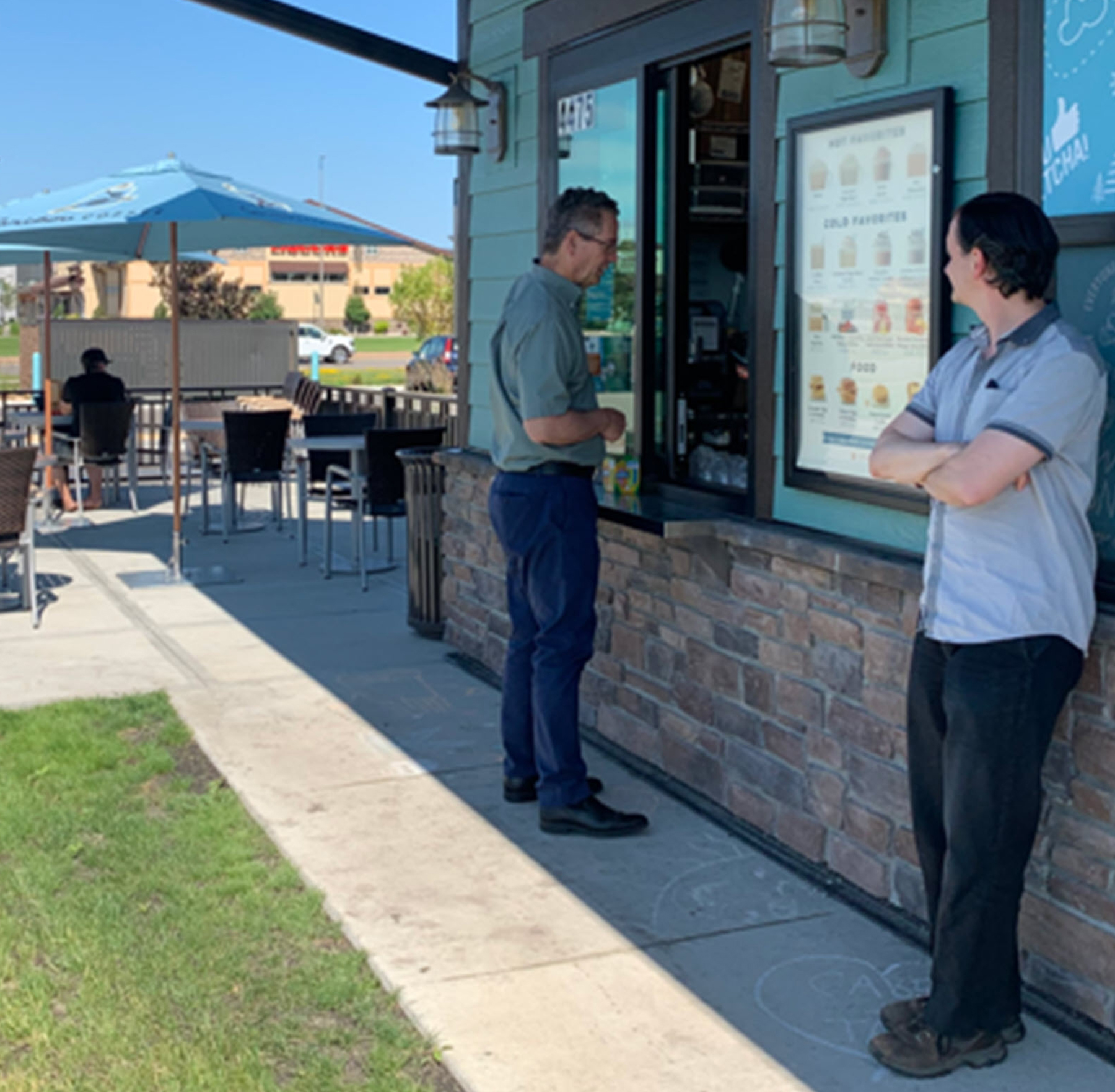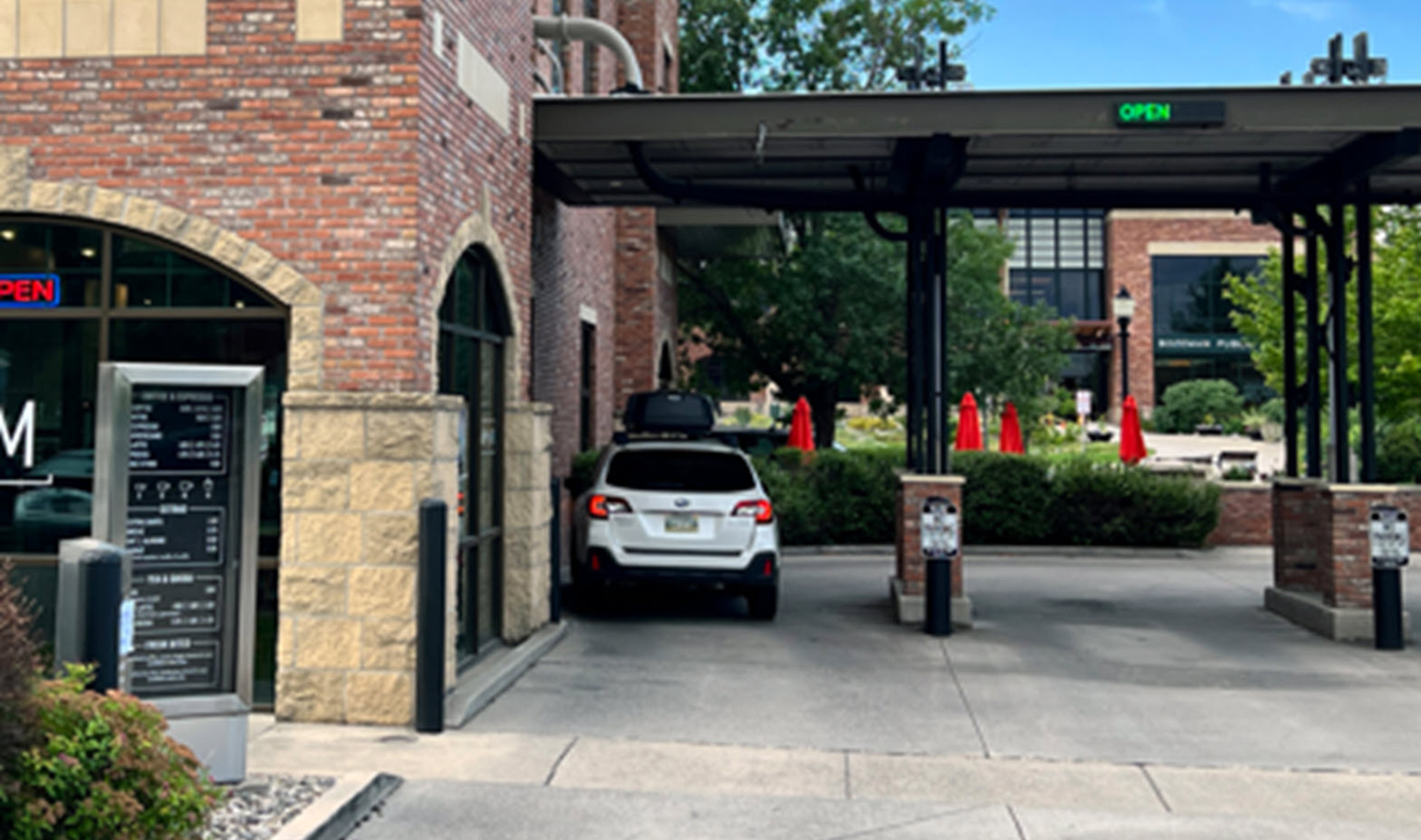By Jill Bahm, AICP
Throughout the U.S., the demand for more walkable communities is growing. Residents, including the increasing population of older adults, are recognizing the value of walking and biking for personal health and wellness and seeing the larger community benefits of reducing emissions and improving air quality.
Contrast this demand with our vehicle-centric culture that enjoys the convenience and efficiency of fast-food drive-thru restaurants and coffee shops. We have had drive-thrus for a long time, with their roots tracing to 1921 in Texas and the trend gaining steam in the 1970s as McDonald’s opened its first one in 1975. They have become standard practice for nearly every fast-food restaurant, but in many instances they result in shrinking interior restaurant seating – if it is offered at all.
Further reading:
- Mixed-use, multimodal community designed for carless connectivity
- Oakland, San Francisco, and Seattle open streets to pedestrians during pandemic
- Need help designing a bike-friendly community? Start here
While restaurants insist that drive-thrus are essential for business, they bring a host of safety challenges for pedestrians, cyclists, and motorists as well as increased emissions from idling vehicles. More land is consumed for vehicle stacking to keep waiting cars from extending into the roadway and to accommodate bypasses or “bailouts” to let drivers out of the queue when necessary.

Despite some communities prohibiting drive-thrus, it is clear that in most places, communities are hesitant to discourage uses that the market demands. If drive-thrus are here to stay, how can communities address the land use conflicts that limit desired improvements to walkability? First, communities should recognize the impacts of auto-centric uses on walkability and then create and implement comprehensive land use policies and zoning regulations.
Revival of walkable communities
In general, communities for a number of years have been planning for a more complete transportation network that accommodates pedestrians, cyclists, and others. During the COVID-19 pandemic, varying restrictions on travel and gathering in public places changed the ways we were able to get out of our homes and experience a sense of community. These restrictions motivated people to go out walking or biking in their neighborhoods, exposing many residents to the true pedestrian experience in their local communities for the first time.
What many found was less than ideal. As we moved out of our neighborhoods and further into our communities, we found gaps in our sidewalk networks, unsafe road conditions for walkers and cyclists, and a lack of destinations to which we could walk. People started to find their regional shared use trails but realized those trails were primarily accessible by driving to the trailheads.
These realizations may be catalysts for the stronger demand for walkability that is happening in many communities, especially in suburban areas where people feel the limitations of the built environment. Since these communities were initially designed around personal vehicles, creating nonmotorized infrastructure took a back seat to maintaining and expanding our roadways.

While for some, walking and bicycle riding are forms of recreation, for others, they are modes of travel that support independence. According to AARP, by 2030, one in five people in the U.S. will be 65 or older; by 2034, people over 65 will outnumber children 17 or younger. This shift in demographics and increase in Americans living with disabilities is also fueling walkability movements. Walkable communities help ensure independence, especially when driving is no longer an option.
The ubiquitous drive-thru
Another impact of the COVID-19 pandemic was the rise in drive-thru and curbside pickup services. Across the U.S., orders at drive-thrus grew by 20% from February 2020 to February 2022, according to a study by the NPD Group, a global retail data company that has since been rebranded as Circana. Restaurant Business magazine called 2021 the “year of the drive-thru,” citing many food chains expanding and upgrading drive-thrus. Increasingly, fast-food restaurants are designed around drivers in vehicles rather than diners in restaurants. Images of restaurant chains designing small buildings elevated above three or four drive-thru lanes are almost otherworldly. While a seeming feat of operational efficiency, there can be significant downsides for communities.
Safety is a big concern for all users of the roadway – motorists, bicyclists, and pedestrians. The wide driveways built to accommodate traffic entering and exiting drive-thru locations can be approached from several angles with vehicles moving simultaneously in different directions. Potential conflicts include rear-end crashes and crashes with pedestrians and cyclists who may be trying to navigate sidewalks (if provided) while dodging turning vehicles.
Distracted drivers also contribute to unsafe traffic conditions when in line at drive-thrus. While waiting, drivers may become distracted with their phones. Or upon receiving their orders, they may check them or dive into them without noticing how traffic has changed in just a few minutes. These distracted driving risks compound the pedestrian safety issue.
From a land use perspective, creating businesses to which one must drive contributes to traffic congestion and takes up land that could be used in ways that better serve communities. According to the U.S. Department of Transportation, the average U.S. household produces about 9.5 vehicle trips a day, half of which are within 3 miles of home. Enhanced nonmotorized infrastructure and increases of places to which people can walk can alleviate traffic congestion and improve safety.
Zoning ordinances facilitate coexistence
When it comes to walkable communities, planners should consider where goods and services are needed. They must think about where residents live, including families with children, single people, and older adults. Armed with this information, it is imperative to evaluate the ways in which the proximity of vehicle-oriented businesses, including drive-thrus, will affect residents and their access to community destinations that support independence and freedom of mobility, such as shops, restaurants, coffee shops, playgrounds, and libraries. Updating zoning ordinances in these areas to limit the number of drive-thrus will support businesses that serve people within the walkable community.
Zoning standards for buildings and sites can be improved to promote walkability. For example, allowing buildings closer to roads improves the visibility of storefronts and enables pedestrians to see activity inside; moving vehicles to the back of buildings for access to drive-thrus and parking minimizes direct exposure to emissions for pedestrians and mitigates other safety risks.
Additional zoning standards could include:
- Moving vehicles away from view and screening drive-thru areas with building elements and landscaping to improve the pedestrian environment, making it more comfortable and pleasant for walkers and cyclists
- Requiring outdoor seating that is attractive and protected from idling vehicles
- Limiting impervious surface coverage and increasing landscaping to reduce stormwater runoff
- Improving landscape standards to promote lower-maintenance plantings and requiring long-term maintenance
- Allowing enhanced landscaping to serve as stormwater retention/detention areas to create a more attractive and inviting outdoor environment
- Increasing standards for building materials and building design to reinforce a sense of permanence and quality for development in the community
- Requiring sidewalks with all new development
- Requiring pavement markings and limited signage to direct pedestrians to logical and safe passages/crossings and alert drivers to where they should expect to see pedestrians

While communities are likely seeing more drive-thru uses, there is a potential that restaurants with older buildings and drive-thru facilities could be closed. Communities could reclaim expanses of asphalt in the aftermath of a drive-thru closure or relocation by updating zoning standards to incentivize redevelopment that more directly supports walkability. This could include allowing for mixed-use buildings and/or taller buildings in exchange for placement of buildings closer to roads, garden spaces, public art, public seating areas, or children’s playscape areas.
Effective zoning starts with good planning
The built environment in many communities is shaped by the automobile. Our fast-paced, on-demand culture supports convenience and prioritizes driving over walking.
With the rising demand for walkable communities, it is incumbent on municipalities to create zoning ordinances that support the changes sought. A major step in creating walkable communities is to create land use policies and zoning standards to make our transportation networks safer for all.
Jill Bahm, AICP, is a partner at Giffels Webster, a multidisciplinary land consulting firm.
This article is published by Civil Engineering Online.



